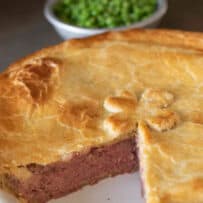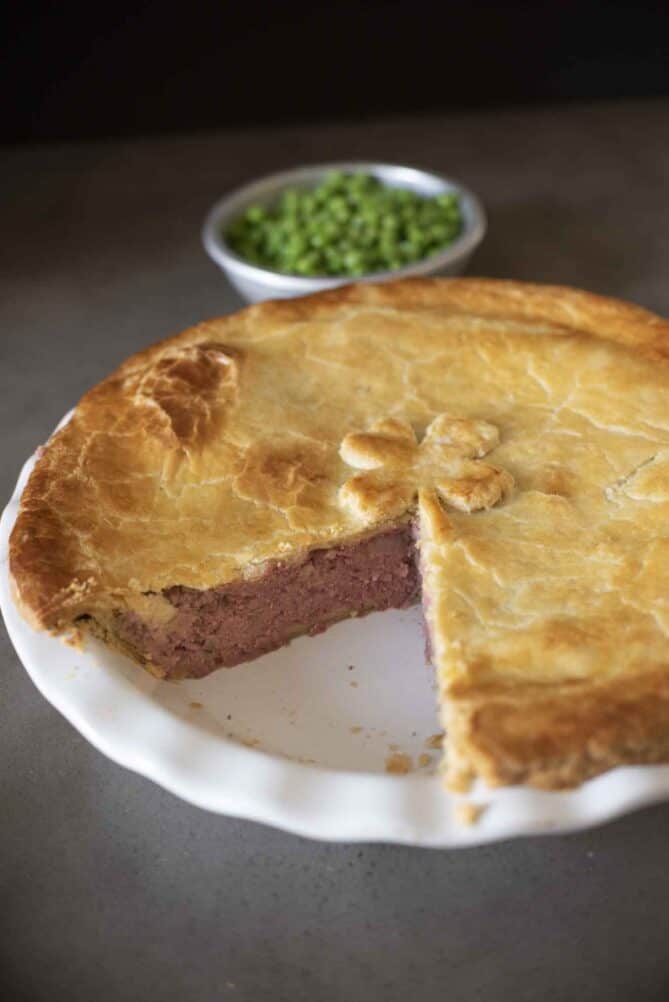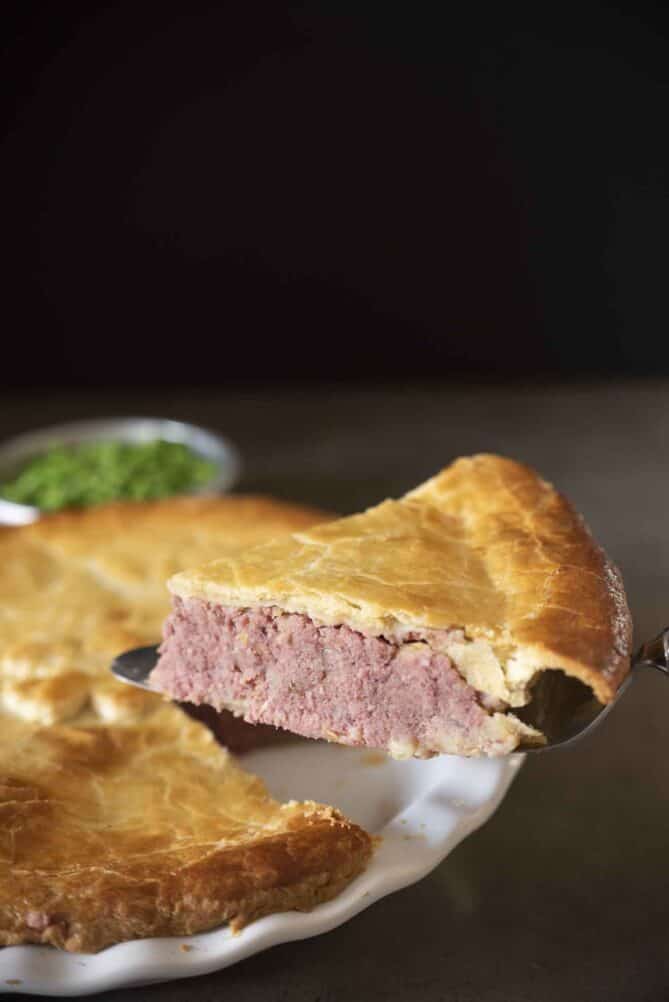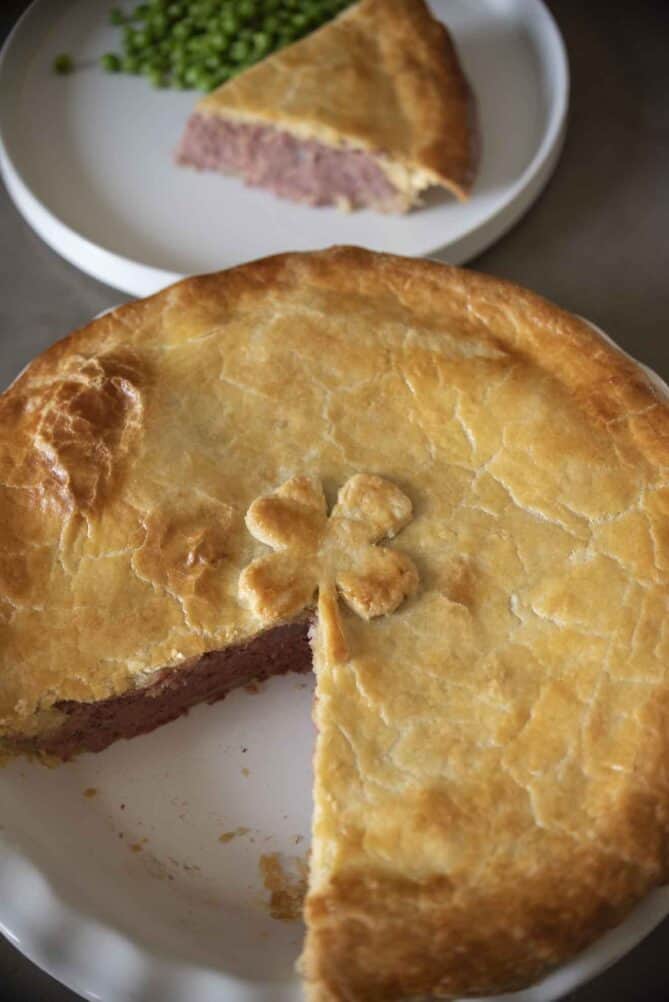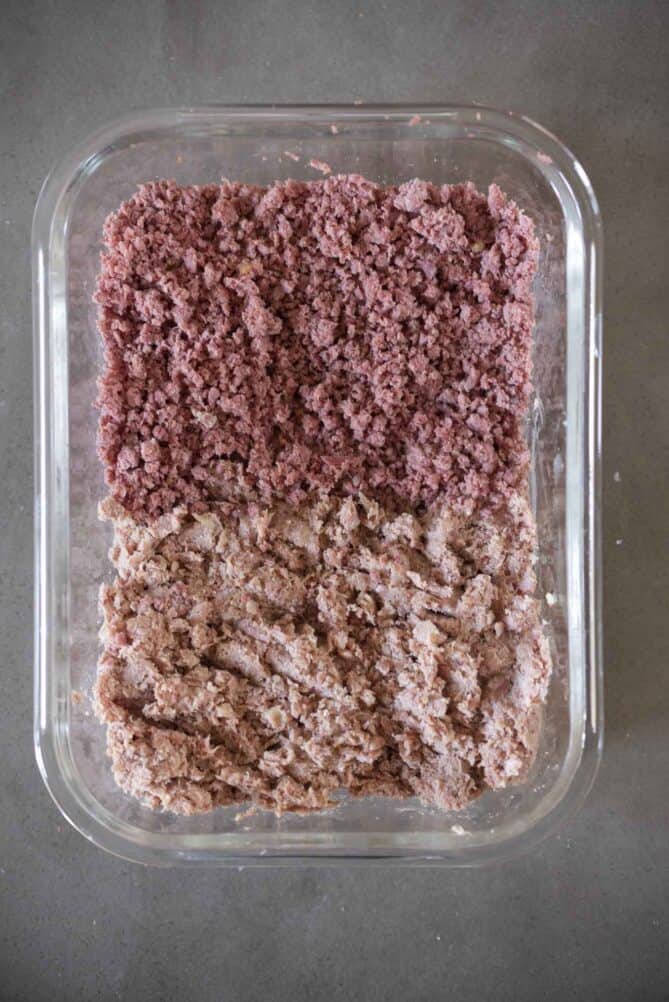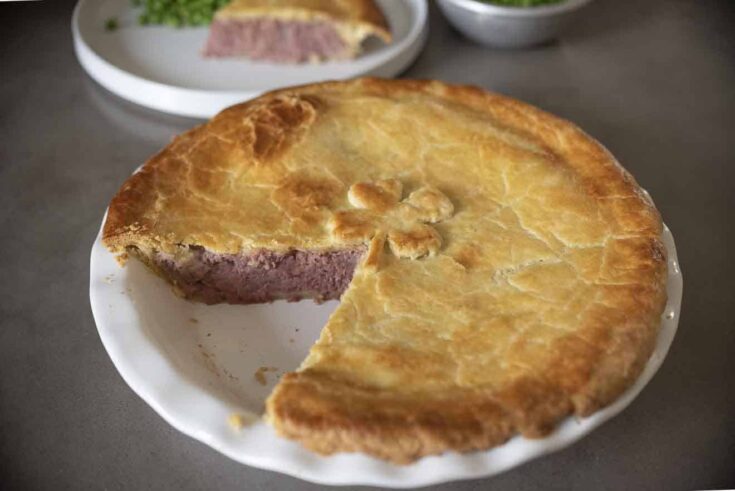Yes, I’m bringing you two options for the corned beef and they are both similar but very different. You know that leftover corned beef that you made for St Patrick’s Day? Well, now you can turn it into a pie! Or go with the tried and true, old fashioned method and use tinned/canned corn beef. The good news is that I’ve made this recipe with both and, as you would expect, the real roasted corned beef tasted much nicer than the canned/tinned version. I know there will be those out there (my fellow British compatriots) that will only use canned/tinned corned beef because that’s exactly how granny used to make it. This is ok as well as either type of meat will get the job done. A simple corned beef pie has only a few ingredients: corned beef, mashed potato, onion and, of course, the crust. The mashed potato is added as a binder so you will want more corned beef than mash – a 3 to 1 ratio of corned beef to mash works best for this recipe.
Is corned beef Irish?
Corned beef is so popular for St Patrick’s Day, but why? Is this delectable dish really of Irish origin? (See more below on this). And, because St Patrick’s Day is this Friday, I decorated the pie with pastry good luck shamrock, just for fun (picture below). Disclaimer: I know that this is titled as a British recipe, yet I have decorated with a shamrock. This is purely an for anyone around the world (particularly my U.S audience) who like to make corned beef for St Patrick’s Day and make this pie. It is a well known debate of its origin and I have read so many conflicting stories on the subject. Whether it was born from the abundance of cows in Ireland or the people of the Jewish colonies in New York, who’s to say?
Corned Beef has no corn
Interesting fact! This is true; corned beef has nothing to do with corn. It traditionally was brined/cured with rock salt that were literally the size of corn kernels and that is how it got its name, which is also known as ‘salt beef.’ Now, you may know know that all traditionally British recipes come with a story of how and why they came about and it usually has to do with the cost and availability of certain food items. As I mentioned previously, tins of corned beef were prevalent during World War 1 and WW2 since fresh meat was rationed. This was a great way for people to get their protein and eat a somewhat balanced meal. How do you turn a freshly roasted corned beef into a pie? Well there are a few things you can do. You can cut the beef (which should be very tender) into chunks and mix with the mashed potato and onion. Or, like I did, you can mimic the pasty texture of canned/tinned corned beef by adding the beef to a food processor and blending until you get the right consistency. Brisket or Round? I recently saw that my supermarket has corned beef in round cut and not brisket, which is news to me, so I had to try it. It was delicious and got the job done and blended up for the pie very easily. So, as a tip, corned beef brisket or corned beef round (the silverside/topside for my U.K friends) works well for this recipe. The makings of any good pie is based on both the filling and the crust. My signature shortcrust pie crust is used for my Steak and Ale Pie, Sausage Rolls, Minced Beef and Onion Pies and all my sweet dessert pies. It’s flaky, buttery and just completes this pie. Truth is, this is one killer crust! You can also use store bought puff pastry, but I prefer homemade. The makings of any good pie is based on both good filling and good crust. My signature shortcrust pie crust is used for my Steak and Ale Pie, Sausage Rolls, Minced Beef and Onion Pies and all my sweet dessert pies. It’s flaky, buttery and just completes this pie. Truth is, this is one killer crust! You can also use store bought puff pastry, but I prefer homemade. When it comes to making this pie with roasted corned beef, if it is so tender than you can pull it apart with your hands, you can make this pie. All you have to do is add it to a food processor and blend until it is the same texture as the canned/tinned version.
Roasted corned beef vs. canned/tinned
From the picture below, you can see that when you blend/process the roasted corned beef it does turn out the same texture as the canned/tinned, but just a little pinker in color.
